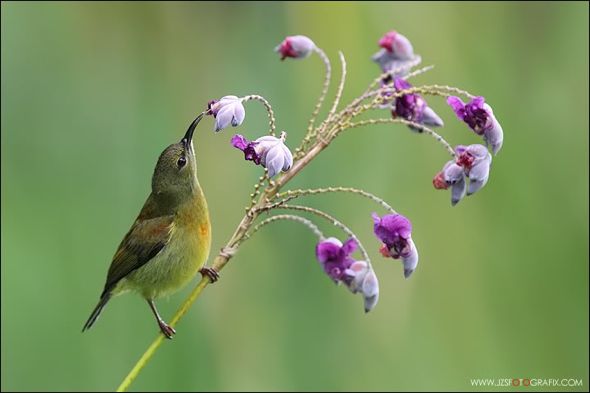Liu Jianzhong a.k.a. Jz photographed a juvenile male Crimson Sunbird (Aethopyga siparaja) sipping nectar from the flower of the Water Canna (Thalia geniculata). Note his tongue projecting out from the tip of his bill.
The Water Canna belongs to the maranta family of plants, Marantaceae. The leaves are banana-like, the blade having a prominent midrib and numerous parallel side veins. The blade is connected with its stalk by a knee-like swelling and this allows it to move in response to light and humidity. Thus the specific name geniculata, meaning “bent sharply like a knee”. In some species of Maranta, the leaves fold up in the evening, as if in prayer, thus the common name, Prayer Plant.
The Water Canna proliferates in shallow marshy grounds in the full sun. Of North American origin, it is commonly grown along the edge of ponds, flowering the year round. The long, erect inflorescence bears pendulous flowers that attract sunbirds.
This post is a cooperative effort between NaturePixels.org and BESG to bring the study of bird behaviour through photography to a wider audience.










3 Responses
It surprised me that the non-native Water Canna is such a favourite of sunbirds. I had several clumps in a pond outside my window, and there are always foraging sunbirds among the flowers.
This is an easy plant to cultivate, and bird fanciers should grow it. All it needs is to have its roots wet. It is also prolific (although somewhat untidy). Dead leaves and stems must be removed frequently.
By the way, the plant in the picture looks more like one of the cultivated varieties rather than the true Thalia geniculata.
I had that original species some years ago, but replaced it with a more attractive cultivar when better varieties were offered for sale in flower gardens.